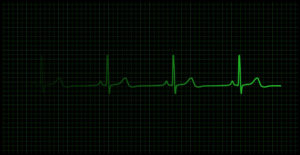
An Introduction to Biometric Research
Human behavior is complicated. We do what we can to gain insight, but for many years that has meant subjective questionnaires and interviews. Advances in science, however, have opened the window into objective data. At any given time, we are all generating subconscious signals that indicate how we’re feeling. Biometric research is a way to measure and record those signals.
What Are Biometrics?
Biometric testing gathers information about biological processes, such as our heart rate. In some circles, the term “biometrics” can apply to a host of different measurements, from fingerprints to voice patterns. At Gazepoint, our biometrics package includes research-grade hardware for measuring a subject’s heart rate and galvanic skin response.
 Heart Rate Measurement
Heart Rate Measurement
Gazepoint allows you to not only track where your subject is looking, but also how they are reacting to any given stimulus. Tracking a subject’s heart rate adds another dimension to your data. Similar to taking a two-dimensional drawing and turning it into a three-dimensional rendering, our equipment gives you a better, more in-depth look at your subjects’ reactions.
Galvanic Skin Response
Galvanic skin response (GSR), also know as electrodermal activity (EDA), measures changes in the electrical conductance in someone’s skin. Electrical conductance is correlated to sweat gland activity, which is a gauge of someone’s emotional state. Haven’t we all experienced the connection between sweat and fear or excitement before? GSR measurements give researches a look into this additional element.
Similar to heart rate measurements, GSR measurements do not give you information on what emotions a subject is feeling. Instead, they measure emotional arousal — the intensity of a given emotion. Visual tracking can help you understand what stimulus provoked an emotional response in a subject, and biometrics can help you determine how strongly they reacted.
Applications
Biometrics are used in many different ways in many different industries. Many of us already use biometrics in our everyday life by unlocking our phones with facial recognition or a fingerprint scan.
The specific biometrics we’ve listed here are most often used to add value to eye-tracking data. Honest, unopinionated data on a subject’s reaction is worthwhile to virtually everyone. You can find biometric testing and visual tracking implemented in the fields of medicine and education, as well as utilized in market research or human-computer interaction studies to improve user experience.
The Value of Biometric Testing
We’ve discussed the power of the human gaze before — with visual tracking, we can gather a lot of significant data on someone’s interest, attention, and more. Biometric testing offers a supplement to that, with more data on the user’s experience and perception. For example, not only can it help you gauge the intensity of a subject’s reaction, as we mentioned, but it could also tell you how hard they are working to understand what they are seeing. It adds a new depth to your research and more objective data that you can use to make more informed decisions.
Are you ready to take your research to the next level? Order a biometrics package from Gazepoint today. As with our eye-tracking technology, we are offering research-grade equipment at an affordable price. You can choose to invest in a hardware-only package to supplement your visual tracking system, or you can get an all-in-one biometrics and eye tracking package. Explore our inventory to find the technology that meets your needs, and place your order today!


